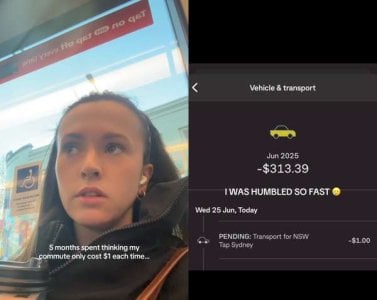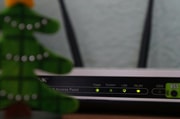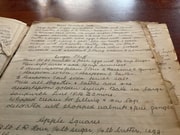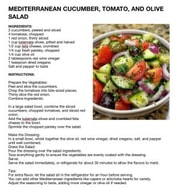‘Took me years to figure out’: Expat reveals Sydney transport truth many miss
- Replies 7
If you’ve ever hopped on a Sydney bus, train, or tram and thought, ‘Wow, that was a bargain!’—you might want to double-check your bank statement.
As it turns out, a surprising number of Sydneysiders (and especially newcomers) have been caught out by a sneaky little quirk in the city’s public transport payment system.
Let’s set the scene: Rebecca, an Irish expat and lawyer, moved to Sydney late last year. Like many of us, she embraced the convenience of tapping her bank card to get around the city.
Each time she tapped on, her banking app showed a $1 charge. ‘What a steal!’ she thought, assuming her daily commute was costing her less than a cup of coffee.
But after seven months of blissful ignorance, Rebecca made a shocking discovery: that $1 wasn’t the real fare at all. It was just a temporary pre-authorisation, and the actual (and much higher) cost was deducted later—often without her noticing.
She shared her revelation on social media, asking, ‘Is this common knowledge? Am I actually dumb?’

Turns out, she’s not alone. Another Irish expat, Isabel, confessed she’d spent five months thinking her commute was just $1 a pop, only to be floored when she checked her June transport spending—$313.39, to be exact! Ouch.
Rebecca’s story struck a chord with locals and expats alike. One person admitted, ‘I’ve been here for two years and only just found out about it.’
Another said, ‘I never look to see how much it costs. Out of sight, out of mind.’ And, let’s be honest, who among us hasn’t been guilty of ignoring those little bank notifications from time to time?
So, what’s really going on with Sydney’s public transport payments?
Also read: Community transport companies refuse new clients as demand surges
The $1 Pre-Authorisation Explained
When you tap on with your bank card (or phone), the system temporarily holds $1 as a pre-authorisation. This isn’t your fare—it’s just a placeholder.
At the end of the day, the real cost of your journeys is calculated and the correct amount is deducted, replacing the $1. If you only check your account in real time, you might think you’re getting a bargain, but the real charges come through later.
NSW Transport confirms this on their website: ‘After you tap on, a pre-authorisation amount of $1 is held temporarily. This will appear as a pending transaction on your statement. As you travel throughout the day, fares accumulate, and the total cost will be processed at the end of the day, replacing the $1 pre-authorisation.’
Why Does This Happen?
This system is designed to make tapping on and off quick and easy, and to ensure your card is valid before you travel. But it can be confusing—especially for those new to Sydney or anyone who doesn’t regularly check their bank statements.
How Much Are You Really Paying?
With fare increases coming into effect from July 14, it’s more important than ever to know what you’re being charged. Here’s a quick rundown of the new Opal fare caps:
Source: @isabel_eannetta / Tiktok.
Tips for Staying on Top of Your Transport Spending
1. Check Your Bank Statements Regularly: Don’t just rely on the first notification you see. The real fare will be deducted at the end of the day.
2. Use the Opal App or Website: You can track your journeys and see exactly what you’re being charged.
3. Set Up Banking Alerts: Many banking apps let you set notifications for transactions over a certain amount.
4. Consider an Opal Card: If you’re worried about overspending or want to keep your transport budget separate, an Opal card can make things clearer.
Read next: ‘It’s now the most expensive place in Australia to park’: And it’s not Sydney!

Have you ever been surprised by your public transport spending? Did you know about the $1 pre-authorisation, or did you learn the hard way like Rebecca and Isabel? Share your stories, tips, or questions in the comments below!
As it turns out, a surprising number of Sydneysiders (and especially newcomers) have been caught out by a sneaky little quirk in the city’s public transport payment system.
Let’s set the scene: Rebecca, an Irish expat and lawyer, moved to Sydney late last year. Like many of us, she embraced the convenience of tapping her bank card to get around the city.
Each time she tapped on, her banking app showed a $1 charge. ‘What a steal!’ she thought, assuming her daily commute was costing her less than a cup of coffee.
But after seven months of blissful ignorance, Rebecca made a shocking discovery: that $1 wasn’t the real fare at all. It was just a temporary pre-authorisation, and the actual (and much higher) cost was deducted later—often without her noticing.
She shared her revelation on social media, asking, ‘Is this common knowledge? Am I actually dumb?’

Many new arrivals in Sydney mistakenly believe public transport only costs $1 per trip when tapping on with a bank card, due to the visible pre-authorisation charge. Image source: @isabel_eannetta / Tiktok.
Turns out, she’s not alone. Another Irish expat, Isabel, confessed she’d spent five months thinking her commute was just $1 a pop, only to be floored when she checked her June transport spending—$313.39, to be exact! Ouch.
Rebecca’s story struck a chord with locals and expats alike. One person admitted, ‘I’ve been here for two years and only just found out about it.’
Another said, ‘I never look to see how much it costs. Out of sight, out of mind.’ And, let’s be honest, who among us hasn’t been guilty of ignoring those little bank notifications from time to time?
So, what’s really going on with Sydney’s public transport payments?
Also read: Community transport companies refuse new clients as demand surges
The $1 Pre-Authorisation Explained
When you tap on with your bank card (or phone), the system temporarily holds $1 as a pre-authorisation. This isn’t your fare—it’s just a placeholder.
At the end of the day, the real cost of your journeys is calculated and the correct amount is deducted, replacing the $1. If you only check your account in real time, you might think you’re getting a bargain, but the real charges come through later.
NSW Transport confirms this on their website: ‘After you tap on, a pre-authorisation amount of $1 is held temporarily. This will appear as a pending transaction on your statement. As you travel throughout the day, fares accumulate, and the total cost will be processed at the end of the day, replacing the $1 pre-authorisation.’
Why Does This Happen?
This system is designed to make tapping on and off quick and easy, and to ensure your card is valid before you travel. But it can be confusing—especially for those new to Sydney or anyone who doesn’t regularly check their bank statements.
How Much Are You Really Paying?
With fare increases coming into effect from July 14, it’s more important than ever to know what you’re being charged. Here’s a quick rundown of the new Opal fare caps:
- Adults: Monday to Thursday, daily cap of $19.30; Friday, weekends, and public holidays, daily cap of $9.65.
- Children: Daily cap of $9.65; weekends and public holidays, cap of $4.80.
Source: @isabel_eannetta / Tiktok.
Tips for Staying on Top of Your Transport Spending
1. Check Your Bank Statements Regularly: Don’t just rely on the first notification you see. The real fare will be deducted at the end of the day.
2. Use the Opal App or Website: You can track your journeys and see exactly what you’re being charged.
3. Set Up Banking Alerts: Many banking apps let you set notifications for transactions over a certain amount.
4. Consider an Opal Card: If you’re worried about overspending or want to keep your transport budget separate, an Opal card can make things clearer.
Read next: ‘It’s now the most expensive place in Australia to park’: And it’s not Sydney!
Key Takeaways
- Many new arrivals in Sydney mistakenly believe public transport only costs $1 per trip when tapping on with a bank card, due to the visible pre-authorisation charge.
- The actual fare for each journey is taken out later as a separate transaction, with the $1 only held temporarily, leaving many unaware of how much they’re truly spending.
- Some expats admitted to not regularly checking their bank statements, leading to shock when realising how much they’d spent on transport over weeks or months.
- NSW Transport clarified that the $1 is just a pre-authorisation, and reminded passengers there are daily and weekly fare caps, with Opal prices increasing by an average of 2.5% from July 14.
Have you ever been surprised by your public transport spending? Did you know about the $1 pre-authorisation, or did you learn the hard way like Rebecca and Isabel? Share your stories, tips, or questions in the comments below!







